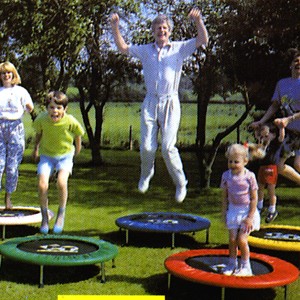My family and I have been through the ups and downs of a short ocean cruise (up) and a protracted viral chest cold with lots of congestion (down). Not much Tai Chi in all that.
I think when you’ve been sick and just sitting around for many days, then finally the desire to move around again comes slowly to your body, that Tai Chi can form the perfect pathway back to energy and action. If ever there’s a time when you try to stay “out of your body” (why bother with it? — stay in your mind, it’s safer), then it’s when you’re “sick dog down.”
Starting back into your body and real life again, you’re not going to run down to the gym and pump iron. You might (and should) try Qi Gong stretches followed up with at least part of your best Tai Chi form. Each day add more. Build a new basis for energy, step by step. What’s the alternative? Just sit around (more days) and wait for some eventual return of you energy? Internal energy attracts external energy like a magnet, but you have to “stoke the stove.” Let Tai Chi speed that stoaking along through its fundamentally slow gentle, grounded, circular movements that are an ideal pathway towards full recovery.
What sort of things might we look for during our Tai Chi rebounding? For me — I’m a universe of one — these aspects have come immediately to mind in my recent rebound experience with Tai Chi:
- balance
- breath
- broadening of perspective
These aspects are of major significance during a rebound.
Balance is everything underlying normal physical and mental life. In deep sickness you tend to lose your balance, for me literally. By selecting first one short form to test myself on I could gradually begin approach restored balance to a fine level. First 20 minute sessions (10 Qi Gong stretches, then 10 minutes of a short Sun forms). Within days I added three more short forms (2 Chen, 1 Sun, 1 Yang) to reach 40 minutes.
Breath is what I was really after. Extended sickness equals extended shallow breathing. Tai Chi embeds proper deep breathing in every move. All the extended oxygen can only speed healing and recover across the board. To say nothing of thought clarity. Move to breath deeply.
Broadening of Perspective on Tai Chi is a major result of this recent experience. I must say I have not been “really sick” in the last four years thinking that Tai Chi might be a background basis for this healthy span of time. I’ve had lots of major (life threatening) experience in my 72 years (and not a perfect lifestyle). Now after 10 days of deep viral lung congestion I was sort of caught off guard. Now I have discovered that Tai Chi provides a sort of practical heal baseline for each of us, customized to our own bodies. Using Tai Chi to rebound, you can test EVERY body system as to to normal functionality and in cases of some short falls continue your Tai Chi practice with even more determination to restore all systems. Expectations and effort are a powerful healing combination.
With your Tai Chi health baseline well in mind (selected form(s) performed slow, smooth, continuously, and correctly, you now can move boldly forward in to new territories of energy and aliveness.
Go!


Just another TaiChi lesson.
LikeLike